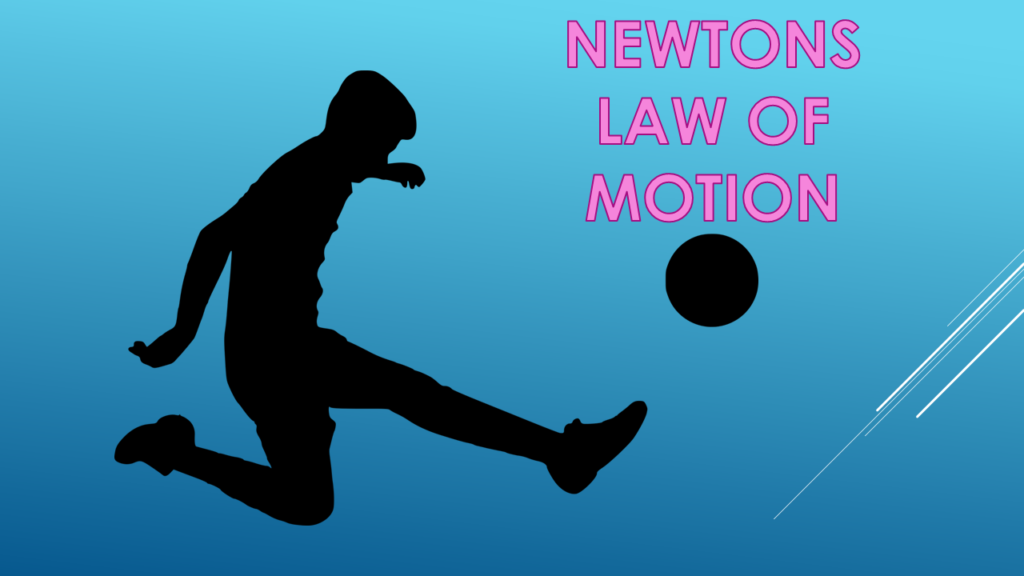Isaac Newton’s First Law of Motion, also known as the Law of Inertia, is one of the most fundamental principles of physics. It states that an object at rest will remain at rest, and an object in motion will continue in motion with a constant velocity, unless acted upon by a net external force. This law has far-reaching implications for the behavior of objects in our everyday lives, from the motion of cars on a highway to the orbit of planets around the sun.
In this article, we’ll take a closer look at Newton’s First Law of Motion, examining its definition, practical applications, and examples. We’ll also explore how this law relates to other fundamental principles of physics, such as force and acceleration, and how it has contributed to our understanding of the universe.
Newton’s First Law of Motion: Definition and Explanation
The first law of motion, as stated by Newton, says that every object continues in its state of rest, or of uniform motion in a straight line, unless it is compelled to change that state by forces impressed upon it. In other words, objects have a natural tendency to resist changes in their motion. This tendency is called inertia.
The Concept of Inertia
Inertia is the resistance of any physical object to any change in its motion, including a change in direction. It is a property of matter and is related to the mass of an object. The greater an object’s mass, the greater its inertia, and the more force is required to change its state of motion.
Practical Applications of Newton’s First Law of Motion
The concept of inertia has many practical applications in our daily lives. For example:
-
- When you’re driving a car and suddenly hit the brakes, you’ll feel yourself lurch forward. This is because your body has inertia and wants to keep moving forward even though the car has stopped.
-
- Similarly, when you’re riding a bike and suddenly stop pedaling, the bike will keep moving forward for a short distance. This is because the bike’s wheels have inertia and want to keep moving forward even though the pedals have stopped.
-
- In space, objects continue to move at a constant velocity because there is no air resistance or friction to slow them down.
Examples of Newton’s First Law of Motion
Some common examples of Newton’s First Law of Motion include:
-
- A book sitting on a table will remain at rest until a force is applied to it (such as someone picking it up).
-
- An ice skater will continue to move forward at a constant velocity unless acted upon by an external force (such as friction from the ice or air resistance).
-
- A ball rolling across the floor will continue to roll at a constant velocity unless acted upon by an external force (such as friction or someone picking it up).
Relationship to Other Principles of Physics
Newton’s First Law of Motion is closely related to other fundamental principles of physics, such as force and acceleration. In fact, it can be used to define both
conclusion
In conclusion, Newton’s First Law of Motion, also known as the Law of Inertia, states that an object at rest will remain at rest and an object in motion will continue its state of motion with a constant velocity unless and until acted upon by an external force. This law helps explain why objects behave the way they do in the absence of any external force. It also serves as a foundation for understanding the other two laws of motion developed by Newton. Understanding the concept of inertia is essential in comprehending the motion of objects and their behavior in different situations. By grasping this fundamental law, we can better understand and predict the behavior of objects in motion, from the movement of a ball to the orbit of a planet.
FAQ's
1. What is the relationship between mass and inertia?
Ans. The greater the mass of an object, the greater its inertia. This means that it will require a greater force to change its motion.
2. How is Newton’s First Law of Motion related to space travel?
Ans. Newton’s First Law of Motion explains why objects in space continue to move in a straight line at a constant velocity, with no external forces acting upon them. This is why spacecraft can travel long distances without the need for additional fuel or propulsion.
3. What is the practical application of Newton’s First Law of Motion in daily life?
Ans. When a car suddenly stops, the passengers continue to move forward at the same speed as the car was traveling. Without seat belts, the passengers would keep moving forward until they hit something, such as the dashboard or windshield. The seat belt provides an external force that stops the passengers from continuing to move forward, in accordance with Newton’s First Law.

